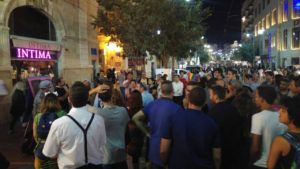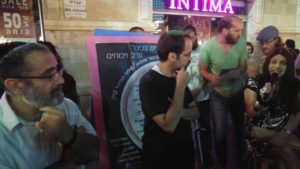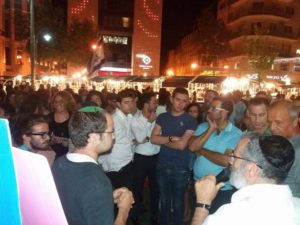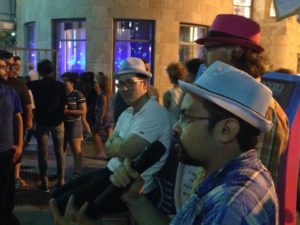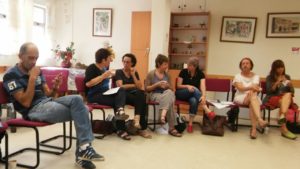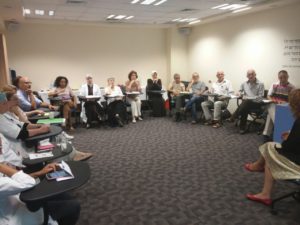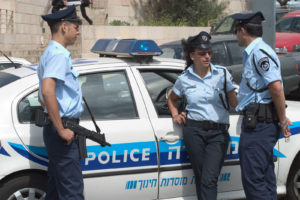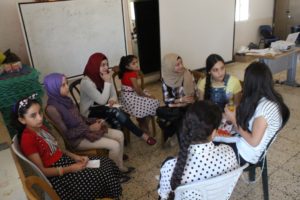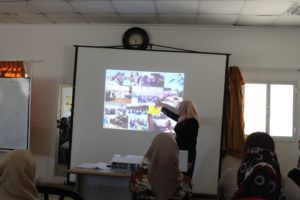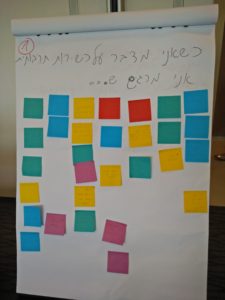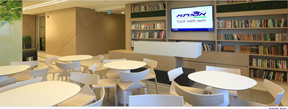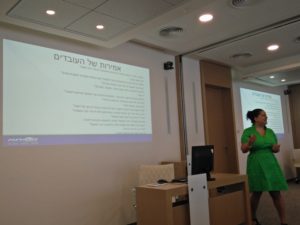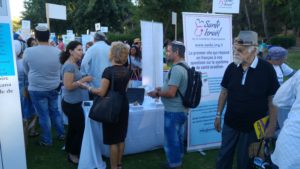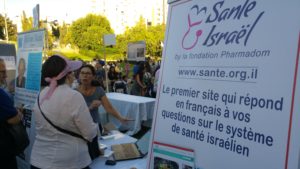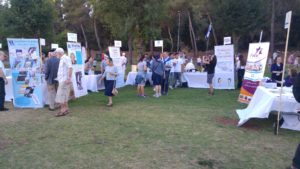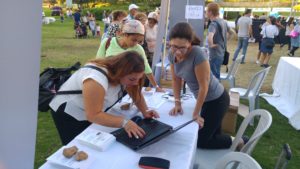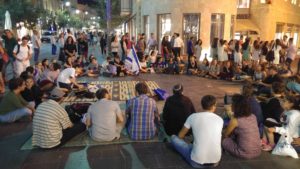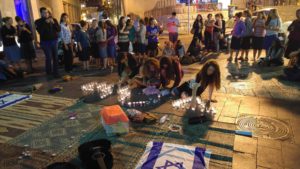A Source of Pride – Speaking in the Square Debate Nights Discuss the Gay Pride Parade
“Sometimes, after an evening in Zion Square, it’s difficult for us activists to go to sleep: energies are high, and sometimes the atmosphere is tense. It takes awhile for the adrenaline to leave our systems and fall asleep. But sometimes it’s hard to fall asleep from the excitement and wonder at the strength of what took place yesterday in the Square, in a crowded and hopping Debate Night.”
That is how one of the Speaking in the Square activists described the Speaking in the Square Debate Night on July 21, which took place after a thankfully uneventful Gay Pride Parade. Speaking in the Square has been there over the past 2 years through the thickest and thinnest of social tensions. Last Thursday, they discussed the pro’s and con’s of the parade, which has been prominent in the public discourse leading up to the parade.
The activist continued continued: “There were Ultra-Orthodox, modern orthodox, secular, gay and straight, and all spoke about the Gay Pride Parade: On tolerance, about considering the ‘other’ and on all of our lives in Jerusalem. For many, it was their first encounter – intriguing but full of emotion – with those who have different opinions. We’re happy and proud to provide that opportunity.”
And here’s the Facebook post in Hebrew:
The subject of the Gay Pride Parade came up in last week’s Debate Night as well, as a result of the public storm raised by a number of Rabbis in the weeks preceding the march. They opened the night with the question of if the parade should run through downtown Jerusalem. They continued on to the question of if single-sex marriages should be allowed. Other subjects that were raised include assimilation and legalization of recreational drugs.
Between the questions a woman performed a spontaneous values-related-social rap, and after her a young man performed a rap in favor the legalization of cannabis. These spontaneous performances are also part of the respectful discourse that Speaking in the Square are advancing in Zion Square. Zion Square is becoming the town square in the full meaning of the term – a place where different people meet and they talk informally, mutually respecting each other.
“During the summer youth and tourists all come down to the square, and it’s an excellent opportunity for activities that promote tolerance,” said one Speaking in the Square regular. “We’re proud to be part of it. Come and join us!”
Many thanks to the UJA-Federation of New York and the Jerusalem Foundation for their continued support of our efforts to promote tolerance in Jerusalem.
Here’s the Facebook post in Hebrew from last week:

